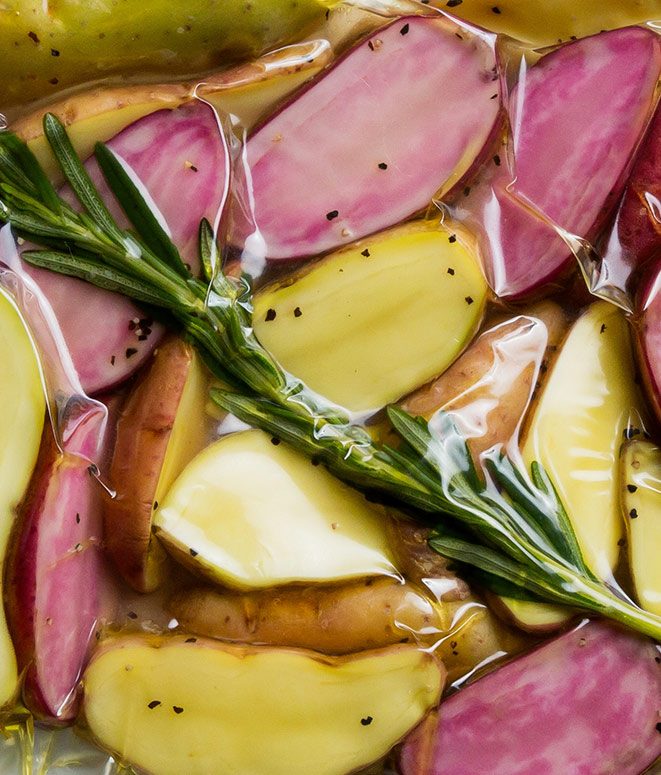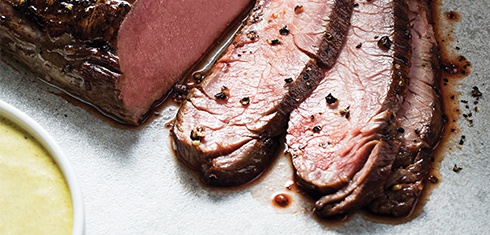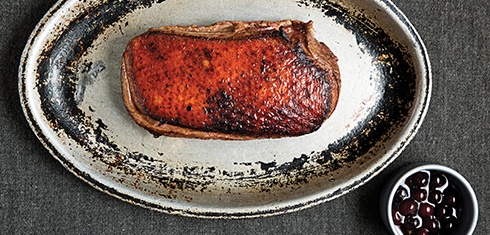BY Morgan Fecto
With any new endeavor, it’s important to know a few ground rules before you get started—and sous vide cooking is no exception. If you’re just starting out with the method, you’ll be more successful if you’re armed with information on the best ingredients to cook sous vide as a beginner, what not to put into the pouch, and some basic time-and-temperature guidelines. Luckily for you, we’ve compiled that must-have info below—and you’ll find plenty more in the Tips & Techniques section and on the How to Cook Sous Vide page.
Here are some essential rules and reminders for anyone striking out into sous vide territory for the first time:
Start with fresh ingredients.
“This is even more important with sous vide cooking because the method amplifies whatever the quality of the raw material is,” says James Chen, Director at the Culinary Research and Education Academy, a food advisory that focuses on sous vide techniques. “Fresh will taste even fresher since sous vide accentuates flavors—good ingredients will be even better and substandard ingredients will be worse.”
Don’t hack it!
“You shouldn’t boil Ziploc bags,” Chen says. “Home chefs need to invest in the proper equipment. Online hacks are risky and could prove dangerous, and the results could put you off the method for good.”
Play the long game.
In regards to proteins, recipes with long cooking times are an easier starting point for a beginner, since the protein in question spends more time at the desired temperature. Also, proteins that cook for longer periods—such as short ribs and pork belly—don’t require the added step of probing to determine the core temperature. Probing isn’t necessarily difficult, but it requires an extra level of know-how.
Start simple for the best results.
Sous vide cooking can have a transformative effect on many foods, but we recommend starting with fish, poultry, steak, and vegetables for an easy introduction to the method. With vegetables in particular, bypass the delicate leafy greens and start with starchy root vegetables, which lend themselves particularly well to the sous vide process.
Get guidance from a trusted source.
“Times and temperatures vary depending on your source. There are books by notable chefs that include instructions to sous vide ingredients at temperatures that we know are dangerous, but it’s still out there as a reference for people,” Chen says. “Proper training and education are key.” For a deeper dive into the proper sous vide techniques and the science behind the method, CREA offers helpful online courses, such as the Sous Vide Fundamentals course ($50).
Related Articles VIEW MORE ARTICLES
Tips & Techniques
A Guide to Sous Vide Sauces
Every home chef should count these sous vide sauces among their kitchen secrets.
Read More >Tips & Techniques
How to Sous Vide: Octopus
The sous vide method is the ultimate secret weapon for transforming octopus into an impossibly tender, delicate dish.
Read More >Tips & Techniques
Getting Started with Sous Vide
Trying sous vide cooking for the first time? Get the scoop on how to do it right with helpful tips from the chefs at Cuisine Solutions, the world-renowned experts in the sous vide method.
Read More >Related RecipesView All Recipes
Sous Vide Flank Steak
 Beginner
BeginnerJuicy, flavorful, and perfectly done: Follow this sous vide flank steak recipe for red-meat nirvana.
Sous Vide Duck
 Beginner
BeginnerJuicy, faintly tart blueberry is a fitting counterpoint to rich, flavorful duck. Your taste buds will thank you.
Buy the Magazine
Buy NowDedicated to the Art & Science of Sous Vide
The first publication devoted to the art and science of sous vide cooking, featuring innovative recipes, visual inspiration, expert techniques for cooking sous vide at home, and exclusive interviews with world-class chefs.




